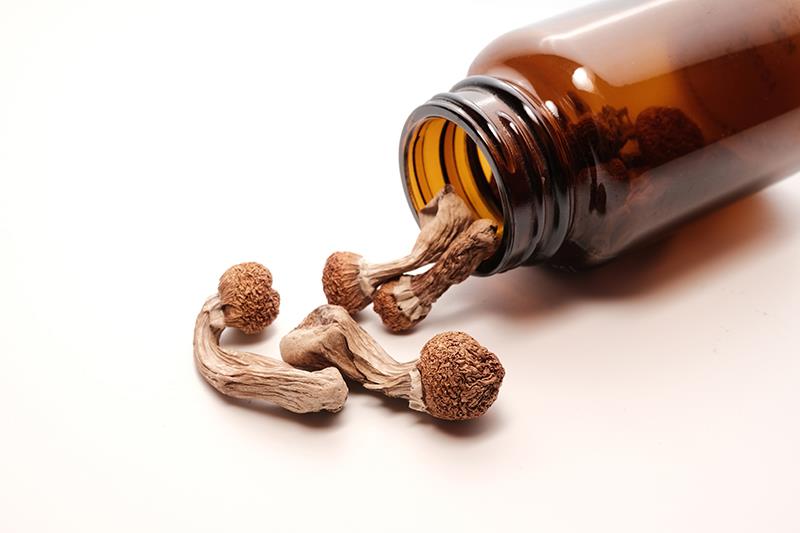Psilocybin shows promise for treatment-resistant depression





The use of single-dose psilocybin offers potential safety and efficacy in patients with severe treatment-resistant depression (TRD), a study has shown.
“An unexplored question concerns the durability of the antidepressant effect beyond 12 weeks and whether durability can be extended with additional dosing,” the researchers said.
A 12-week, open-label trial was conducted at Sheppard Pratt Hospital in Baltimore, Maryland, US. Adult patients (mean age 40.6 years) with a major depressive episode with documented insufficient benefit from at least five treatments during the current episode were included.
All participants received a single dose of synthetic psilocybin 25 mg, who discontinued psychotropic medications at least 2 weeks prior to dosing through at least 3 weeks postdosing. Patients met with therapists for three sessions prior to treatment, during the 8-hour dosing day, and for three integration sessions after treatment.
Change in Montgomery-Åsberg Depression Rating scale (MADRS) at 3 weeks post-treatment was the primary outcome, and secondary outcomes included MADRS scores up to 12 weeks post-treatment. Patient-rated scales capturing depression and function level were completed at baseline and at all subsequent visits.
Twelve patients (six male and six female) with severe TRD were followed. Symptoms of depression decreased significantly at week 3 (MADRS least-squares mean change, ‒15.8, 95 percent confidence interval [CI], ‒25.4 to ‒6.3) and week 12 (MADRS least squares mean change, ‒17.2, 95 percent CI, ‒25.2 to ‒9.1). [Am J Psychiatry 2025;doi:10.1176/appi.ajp.20231063]
Exploratory analyses revealed the association of the Oceanic Boundlessness (OB) dimension of the psychedelic experience with postdosing antidepressant responses. In addition, five patients with comorbid post-traumatic stress disorder (PTSD) benefitted less from the antidepressant effect of a single-dose psilocybin.
“As an initial foray into psilocybin treatment for patients with major depressive disorder that is difficult-to-treat, this study provided an early indication of safety, tolerability, and promising potential efficacy,” the researchers said.
Remission
In an earlier study of patients with severe TRD, treatment as usual resulted in extremely low rates of response and remission. [J Clin Psychiatry 2006; 67:688-695]
Serial antidepressant trials involving patients with no response to treatment reported steep reductions in the odds of remission, with remission rates after a fourth antidepressant trial ranging from 10 percent to 15 percent. [Am J Psychiatry 2006;163:1905-1917; Am J Psychiatry 2006;163:1161-1172; Am J Psychiatry 2006;163:28-40; CNS Drugs 2009;23:627-647]
In the current study, the remission rate was 41.7 percent at week 3, and 25 percent of patients met the remission criteria at week 12. Most of the participants showed clinical response at both timepoints.
“The individual trajectories of the participants in this trial are suggestive of distinct response profiles; three groups may be roughly approximated on visual inspection—corresponding to nonresponders, responders, and remitters,” the researchers said.
“Additional clinical characteristics and particularly biometric data such as EEG or neuroimaging may be valuable in establishing predictors of response in future, larger studies,” they added.